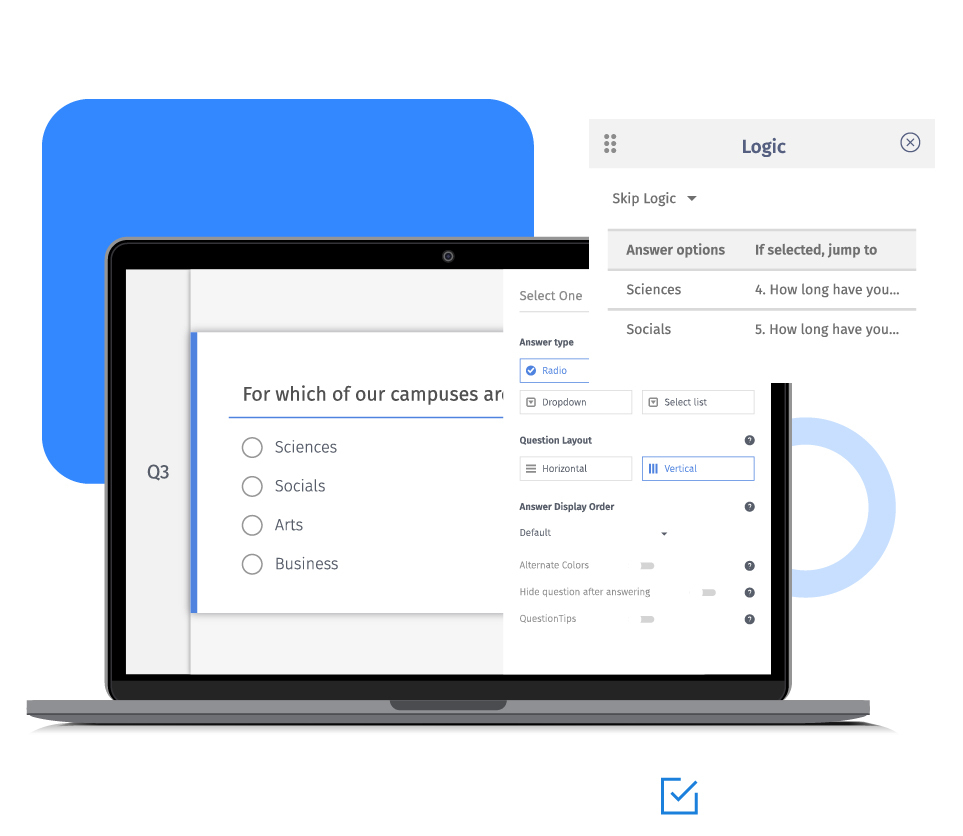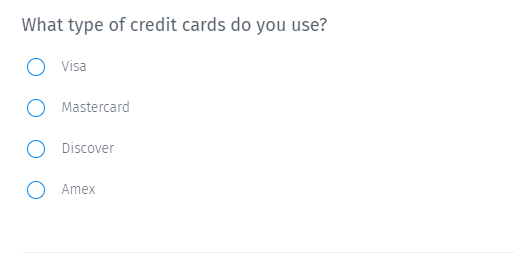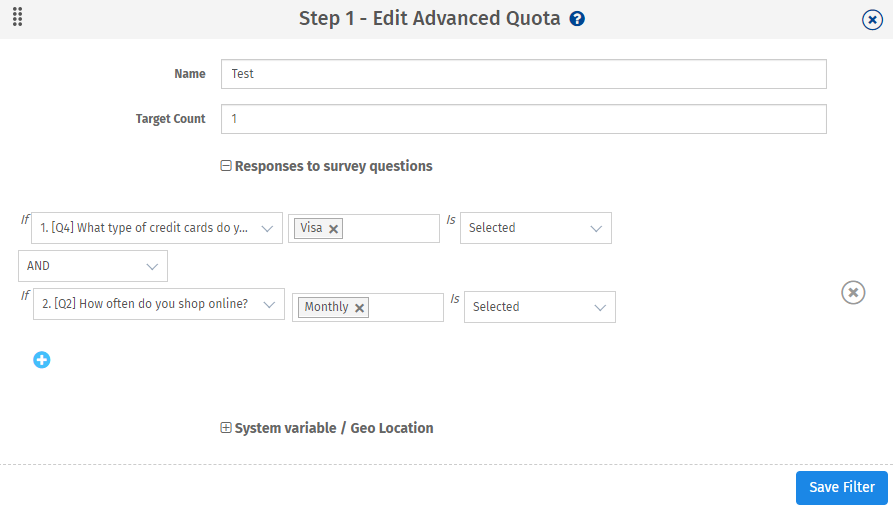If the survey uses more than one quota control technique, it is considered as distributed quota control. Using this method, you can set up survey quota based on answers to multiple questions, custom variables, number of responses for each option, geo-location, and more.
There are two approaches to quota control - pessimistic and optimistic.
Pessimistic quota control does not count an individual as passing quota until they have completed a survey. So we can be sure that all quota cells are filled. If a user sends out many survey invitations, there is a strong chance that there will be an over quota situation due to too many completions. QuestionPro implements the pessimistic quota system. You can apply a distributed logic quota on multiple questions.
Optimistic quota control counts anyone who starts the survey but does not finish it. It has a lesser chance of being over quota, but a higher risk of being under quota. To avoid going over quota, the survey creator should manage the timing of survey distribution such that all respondents do not receive the invitation at the same time. It would also help researchers have better control over the responses.
Example of an advanced quota control in surveys
Assume a fintech company wants to know which credit card their respondents use. They conduct an online survey with their sample audience, representing the actual customer base.

Here's how you can set a limit on the number of responses for a specific answer option. Say, the total response quota is 10, with an individual limit of one response for the option Visa.

Once the quota limits for an option hits, respondents will not be able to select that option anymore. If more than one respondent selects the option Visa, they will see a message 'Thank you for your time, but we have already received the required responses.' If the respondents revisit the link, they will be able to select other options.
If the total response quota for the survey is hit, the survey will be deactivated.
You can also create multiple conditions and activate them with boolean operators like 'And' and 'Or'.

Types of advanced quota control in surveys
Explore further on how to control response quota and collect data from limited number of respondents.
Explore our help file on complex quota control to learn more.
Explore our help file on custom variable quota control to learn more.
Advanced quota control: Use this method to limit the number of responses based on the selection of options, custom variable, geo-location, email list, and device type.
Dynamic quota control: Using this method, you can program the survey to take one of the below actions once the quota limit is reached.
Explore our help file on dynamic quota control to learn more.
Uses of advanced quota control in surveys
Website usability survey: E-commerce companies often run surveys to learn more about their shoppers' experience. They can use quota control to limit the number of responses from different devices.
Demographic studies: Organizations that sell their products to different customer segments can use advanced quota management to limit the responses from a specific population.
Advantages of distributed quota control on responses
Multiple quota control: It can be challenging for the survey makers to hit the exact quota limit without close control on the distribution. With distributed quotas, you can apply a limit on responses at multiple levels in a survey. It enables researchers to have more control over the data collection.
Accurate data: Using a distributed logic quota ensures the pool of responses represents the target audience. It prevents any bias creeping into the survey data.
Limit number of rewards: You can reward respondents who fit into your criteria. Say, send a gift card to the first five respondents of an online quiz who selected option A.
How to set up distributed logic control in your surveys?
Learn how to set up and use this feature using our help file on advanced quota control.
Survey Software Easy to use and accessible for everyone. Design, send and analyze online surveys.
Research Suite A suite of enterprise-grade research tools for market research professionals.
Customer Experience Experiences change the world. Deliver the best with our CX management software.
Employee Experience Create the best employee experience and act on real-time data from end to end.








